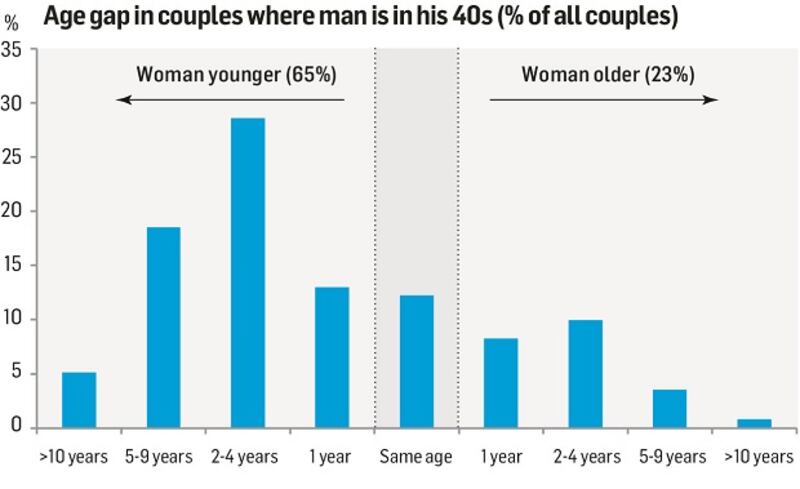Over the past few years, I have had countless conversations with old friends, who ask, only half in jest, “Do you know any decent men for [such and such a woman]?”
On reflection, when I go through my net of available single straight friends – and exclude the drunks, the gamblers, the eejits, the bankrupts, the libertines or the plain odd – there are very few “decent” men available.
Yet in contrast, there appear to be an extraordinary number of single women out there. This is not just a hunch: it is fact. Nor is this “Mr Smug Married” moralising about people’s lifestyles and who they live or don’t live with. This is about exploring demographic trends that should be taken into account to properly plan our society.
As the pope is coming to Ireland this month, I’ve been looking at some of the significant sociological differences between the Ireland when the last pope visited in 1979 and Ireland today. There are the obvious ones: the raft of liberal legislation, for example; but the structure of our lives, particularly our love lives, has changed quite dramatically.
When we look at the data, what we see is that the “Pope’s Children” – those born around the time of the first pope’s visit – are the most single Irish generation ever.
Jumped dramatically
The 1981 census reveals that just 11.2 per cent of women between the ages of 35 and 39 were single – ie, unmarried. So about one in 10. In 2016, this figure had jumped dramatically to 35 per cent – a three-fold increase in the number of single women in their late 30s. Given that about 8 per cent of all Irish households are made up of unmarried couples who are living together, the implication is that a large number, maybe 30 per cent of all Irish women between the age of 35-39, are single.
It’s not just women who are single obviously. When the last pope came to Ireland, 18.7 per cent of all men between the age of 35 and 39 were single. Today 39.8 per cent of men between these ages are single. That’s nearly four in 10 men – more than the number of single women.
In total, 145,507 people between the ages of 35 and 39 are single. That’s around 76,000 men and 69,000 women.
To get a sense of what is happening in Ireland and what is likely to happen in future, Sweden holds some clues
Looking back to the 1979 visit of the first pope – their parents’ days – this is a huge lifestyle change. It’s also a major economic issue. Think about the housing implications for single people. With three times as many single people in their later 30s now than in 1979, we need three times more houses for these people to live in. Their parents were settled when they were their age, two adults living in one house. Now, most of these people prefer to live on their own. So we need more houses for them.
‘Starter’ apartments
What’s more, we need more smaller houses and apartments, rather than three-bed semis in the suburbs. We need not smaller “starter” apartments but we need apartments for thirty-, forty- and fifty-somethings living on their own. And we are not building enough apartments within striking distance of the cities. Demand for smaller units by single people is driving up prices of smaller, often “artisan” cottages within striking distance of the city. And the engine of this urban gentrification is the professional single person.
And back to our opening question: if there are more single men in this age group (and 29 per cent of men in their early 40s are also single), there should be loads of men for single women in their later 30s or early 40s. So why am I asked to matchmake?
Shouldn’t these figures cancel each other out? They don’t, and the reason there is an absence of eligible men for the Pope’s Children women is that the men are more likely to skip a few years and choose younger women.
Sexual revolution
To get a sense of what is happening in Ireland and what is likely to happen in future, Sweden holds some clues. Sweden had its sexual revolution much earlier than Ireland, which means we have data on how that society evolved. Today in Sweden, households headed by either a woman exclusively or a man exclusively collapse when both sexes are in their mid-20s because couples move in together. But there, as people reach their mid-30s and early 40s, many of these couples split up.

In Sweden, households headed exclusively by single women begin to rise rapidly after women reach 35. This figure is continuing to rise as more and more Swedish women become single, because the divorce rate increases through their 40s and 50s.
Yet in Sweden the number of households headed by single men is falling not rising. The men of those divorces hook up very quickly again, and they do so not with women of their own age, who tend to remain single, but with younger women.
Swedish cycle
Dating trends in Ireland reveal signs of the Swedish cycle. A typical single man in his 40s in Ireland is dating women who are younger and in some cases much younger. More than two-thirds of men in their 40s date younger women. And the Swedish experience suggests that these men will gradually settle with women a lot younger than themselves, leaving more and more Irish women single.
This development, largely undocumented, is among the biggest societal changes since the last pope’s visit. Who would have predicted that?
I just hope somebody is taking account of it in the planning process.











